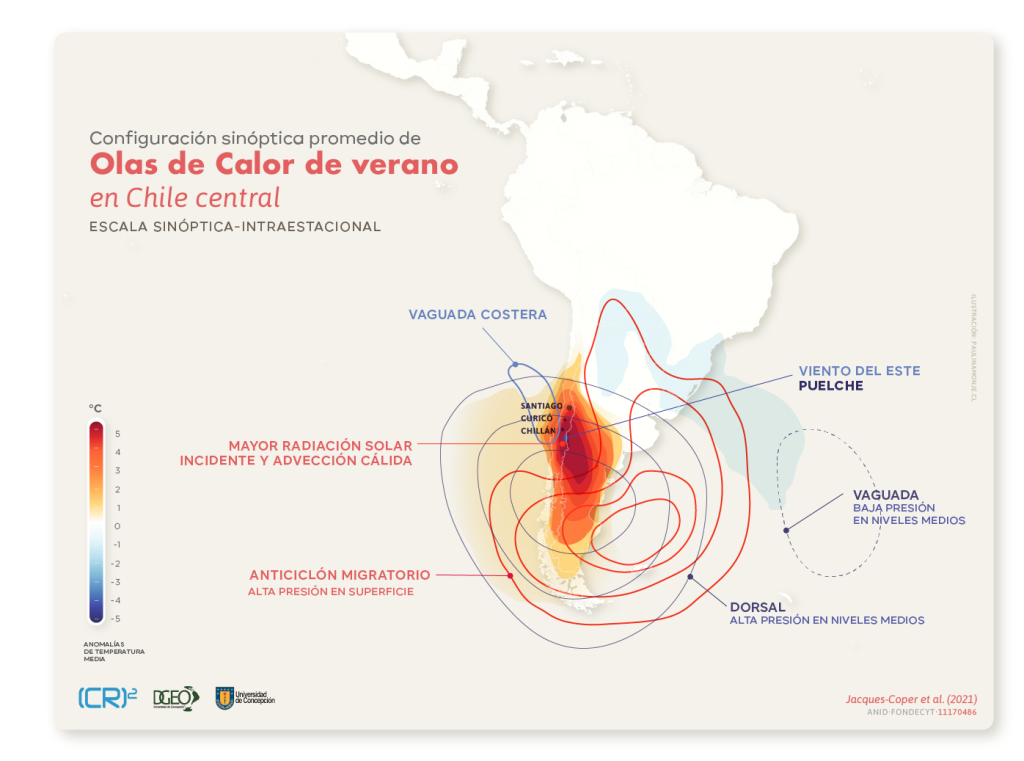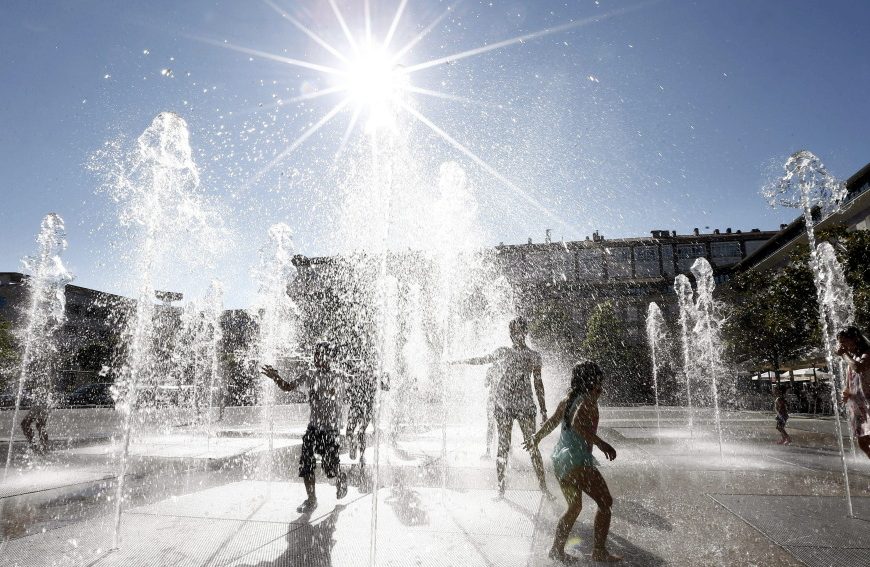By Alejandro Baño Oyarce, Department of Geophysics / abano@dgeo.udec.cl | Illustrations: Project ANID/FONDECYT 11170486, designed by Paulina G. Monje
A group of researchers from the University of Concepción’s Department of Geophysics has managed to forecast two heat waves, about 15 days in advance, that occurred in central Chile during the summer, thanks to the implementation of a predictive model based on the analysis of large-scale changes in the atmosphere. Dr. Martín Jacques Coper, leader of the study, explains that this involved monitoring two of the precursors of heat waves that are observed about two weeks before they occur in the country.
The first of these two atmospheric “teleconnections” is the rise of large air masses in the tropical sector of the Indian Ocean, over Indonesia. This “deep convection” triggers a wave in the atmosphere that moves across the Pacific Ocean towards South America, reaching central Chile in about two weeks. And what are the effects of this atmospheric wave? It favors the intensification of an anticyclone in the south of Chile, which is the previous and normal condition needed for the generation of heat waves.
In addition, a second precursor has been identified, which if produced increases the probability of a temperature increase in the country. This is another atmospheric change, in this case to the southeast of South Africa, also over the Indian Ocean. This is a random variation (not regular like the first one) that also moves through the Pacific to Chile propitiating the anticyclone. The latter is a high-pressure system that clears the sky of clouds, which increases solar radiation and warms the lower atmosphere.
Ugh, how hot can it get!
Heat waves usually occur up to four times each Chilean summer and last five days, on average, according to the analysis carried out by the researchers for the case of central Chile. And when they occur “in pre-Andean and Andean sectors, a relatively dry and warm easterly wind called Puelche is fostered,” explained Jacques, also a member of the Center for Climate Science and Resilience (CR2).
Thanks to this atmospheric observation methodology, a forecast was made at the beginning of December when both precursors were activated. The first is associated with deep tropical convection and the second is named by Jacques and his team as sETI (Standardized Extra-Tropical Index). The latter increased around December 12th, while the former was already in a condition conducive to the event. Given this, they anticipated the high probability of a “Christmas” heat wave, which finally occurred for some days from December 24th.
But that was not all, because the researchers picked up a second precursor signal in the sETI index on December 28th, so they suggested a high probability of a heat wave occurring near January 10th, which also arrived. This one developed a little further south than the previous one, specifically between Chillán and Osorno.
The research began with the support of a project funded by the National Fund for the Development of Science and Technology (Fondecyt), where the climatologist worked together with geophysicists Christian Segura and Daniel Veloso, and undergraduate thesis student Amanda Valencia, all from UdeC’s Department of Geophysics. Currently, there is a website where these atmospheric indices are experimentally monitored, at https://www2.dgeo.udec.cl/shiny/hw-monitor/.

The importance of studying and forecasting heat waves is that anticipatory measures can be taken for their effects on people and ecosystems, such as in the spread of wildfires or mountain ice melt and its effects on river flows. “Therefore, advancing in the identification of precursors of heat waves is key for the prevention and mitigation of their negative socio-environmental impacts,” the academic stressed.
Jacques recalls that there have already been exceptional heat waves, such as those that fostered the spread of the wildfires of January and February 2017, which razed 570,000 hectares, exceeding the historical average by tenfold. 2017 produced a temperature record for Chile, reaching 42.2°C in Los Angeles. Other records compiled by Jacques Coper show that in 2019 there was a 17-day heat wave in Curicó at the end of January, and then another one that impacted from Los Ríos to Magallanes at the beginning of February, setting a record of 38.5 ºC in Valdivia. The latter is linked to the Cochrane Fire, which affected more than 15,000 hectares.
Last modified: 27 de septiembre de 2024






